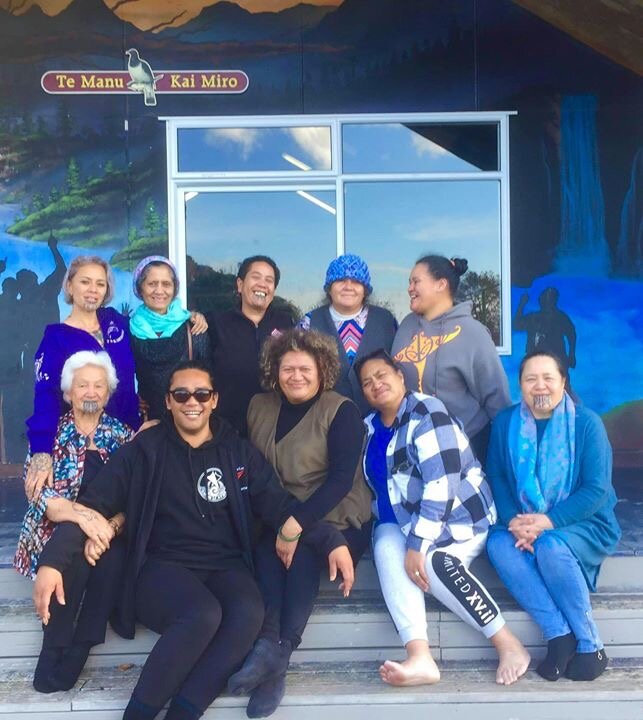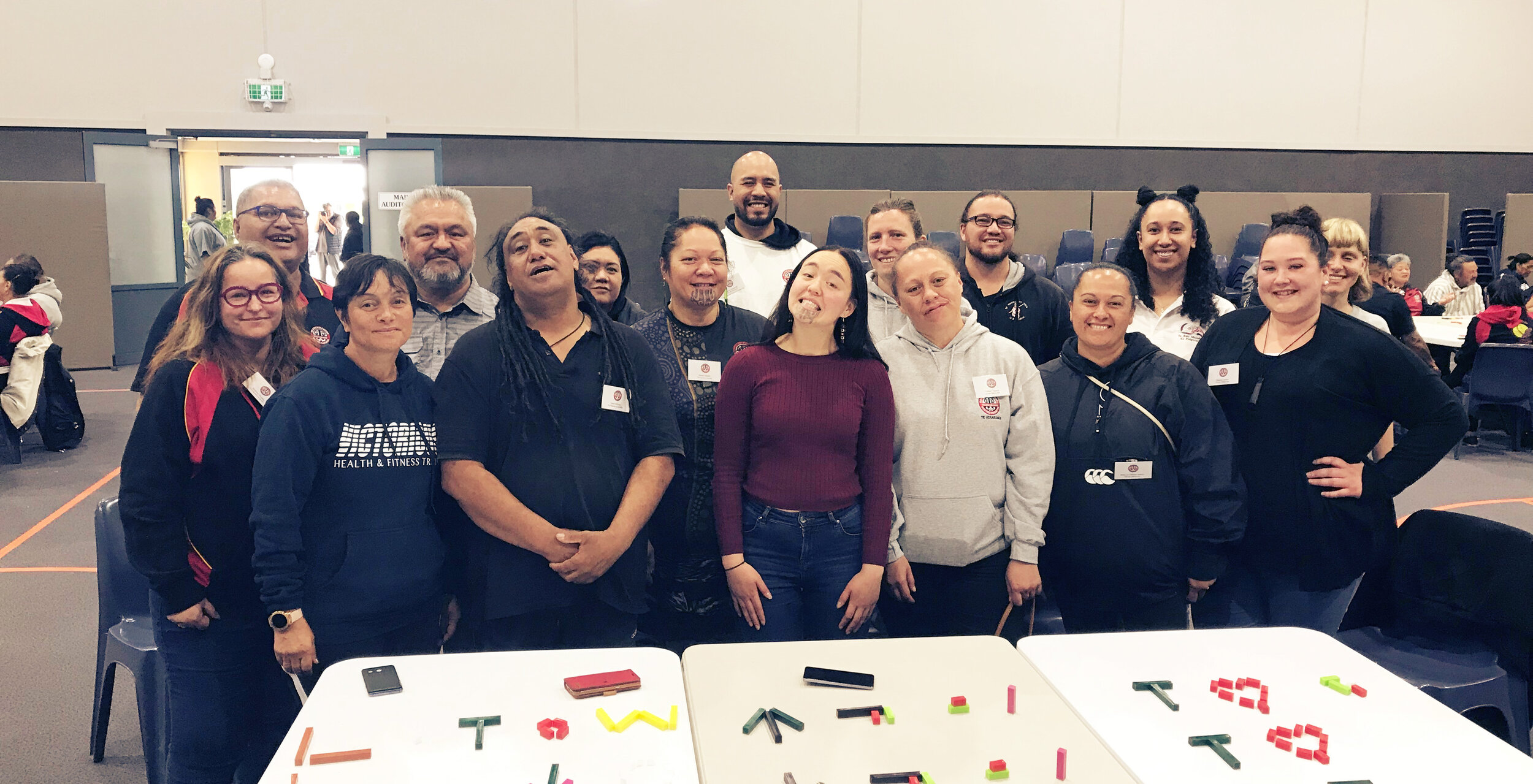Te Ataarangi Trust – Kia kore koe e ngaro taku reo rangatira
Te Ataarangi Trust is at the forefront of Māori language revitalisation in Aotearoa.
40 years ago, Dr Kāterina Te Heikōkō (Ngāti Porou) and Ngoingoi Pewhairangi (Ngāti Porou), had the vision to reclaim te reo Māori as a way of reclaiming rangatiratanga.
That dream led to the development of a community-led organisation, Te Ataarangi Trust. Since those early days, the Trust has supported more than 50,000 people to learn to speak te reo Māori. Nowadays, Te Ataarangi Trust operations are located at a variety of learning hubs across Aotearoa and Te Pāpaka-nui-ā-Māui.
Te Ataarangi Trust kaiako at a professional development hui in May 2019
Te Ataarangi was designed as a community-based programme for adult Māori language learning. It is modelled on The Silent Way method developed by Caleb Gattegno, which utilises Cuisenaire rods (rākau) and spoken language.
Arapine Walker has been with Te Ataarangi Trust for a couple of years, and her priority is to promote the teaching of te reo Māori saying the language revitalisation is a way for our language and culture to live on for the next generation.
“Te reo Māori is a passion and supporting the development of reo speakers in Aotearoa with Te Ataarangi is my dream job,” says Arapine. “I promote Te Ataarangi as a kaupapa, and as a methodology to learn and teach te reo Māori. I know from first-hand experience that Te Ataarangi works.”
Te Ataarangi Trust’s language revitalisation initiatives focus on:
Working to support the Māori language being spoken naturally between generations every day, and in the home
Growing the number of competent speakers
Supporting groups of people with a shared interest to come together to speak Māori
Accommodating local and regional language differences
Te Ataarangi achieves this by utilising several strategies necessary to achieve successful language revitalisation. It focuses on participation in initiatives that focus on re-establishing the Māori language as the principal language of the home, family, neighbourhood, and wider community. Every step, no matter how small, is one step closer to ensuring the survival of our language.
They deliver the language revitalisation programmes kanohi-ki-te-kanohi (face to face) learning hubs in 10 regions across Aotearoa and Australia. This kanohi-ki-te-kanohi delivery is supported by the unique use of Cuisenaire rods, with a strong focus on encouraging speaking te reo Māori aloud.
Group of learners & their kaiako (the young woman in the middle of the picture) at an Ataarangi hui in Nov. 2019
“There’s been a significant increase in demand for te reo teaching across Aotearoa and Australia. We’re looking to upscale our mahi to keep up with that,” says Arapine. “People are wanting to learn to speak te reo Māori, not just for a qualification, but because it speaks to them, resonates with them, and helps them connect with a sense of identity.”
Arapine states that Covid-19 resulted in some challenges in delivering the programme, but they were able to gain some clarity and develop an ‘online’ continuity plan.
Moving to an online platform, Te Ataarangi had to be innovative and adapt. They still found three pou which the process could rest upon.
Marama – Clarity on what the mission is, and what exactly Ataarangi is that makes it unique.
Pono – A need to fully believe in what it is the Trust is doing in order to achieve results.
Ūpoko Pakaru – Continuing to fight through the tough times and maintain strong intent.
“We had to identify exactly that we do and turn it into a full online offering, which was a major transition from our usual kanohi-ki-te-kanohi approach,” says Arapine. “This online approach wouldn’t be possible without maintaining and upholding the kaupapa at all times.”
She continues saying that their experience through Covid-19 Te Ataarangi took learnings from this new online approach to apply to future situations. “With Marama, Pono and Ūpoko pakaru, we’re able to carry on and uphold our mission to revitalise te reo Māori.”
“We don’t know when a pandemic or a major event like this will ever come again,” says Arapine. “We do know that we will be ready to continue with our kaupapa no matter what”.,
To learn more about Te Ataarangi Trust’s incredible kaupapa and mahi, head to www.teataarangi.org.nz



